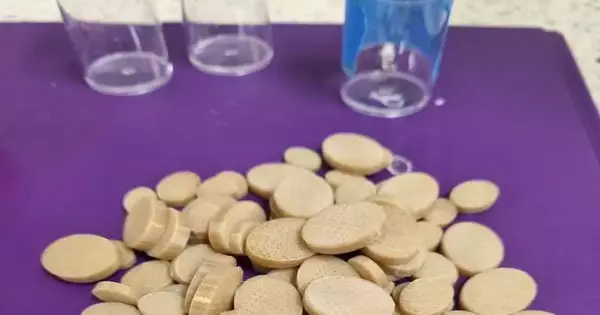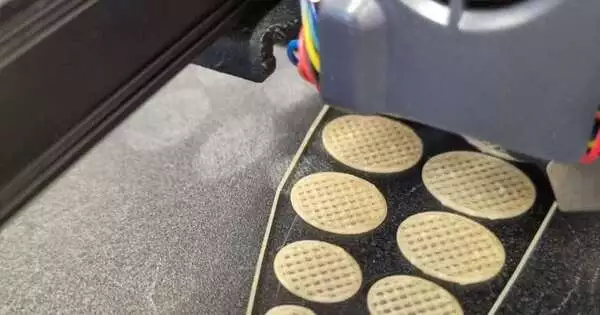Research suggests that printed tablets have reached a level of quality comparable to that of conventionally manufactured tablets, suggesting that 3D-printed medicine could be the future of personalized health care.
The promise that 3D-printed medicines hold for patients is highlighted in our new study, which was published in the International Journal of Pharmaceutics.
The nearly limitless potential to have medicines tailored to your specific health requirements may become a reality sooner than you think if we can scale up 3D printing for everyday use.
A “one-size-fits-all” approach to medicine production has existed for a long time, with tablets and capsules only available in a predetermined number of doses. However, what if those precise dosages do not work for you?
When your medication comes in predetermined doses, it can be difficult to avoid taking too much or too little of it. When taking important medications like antidepressants, which can cause side effects if the dose is changed too quickly, this can have serious consequences.
The traditional approach to dealing with these situations has been to attempt to divide the tablet into quarters or halves to obtain a dose in between. However, even if this is possible for every tablet, research demonstrates that it frequently results in an incorrect dose.
With the help of 3D printing, doctors and other medical professionals can truly personalize your medication and eliminate the guesswork.

A heap of the finished tablets printed in 3D. Credit: Liam Krueger, author, provided
Layer by layer
You might have seen 3D printers making food, toys, and medical devices.
The same technology is used to print medicines, which build a tablet layer by layer by melting the medicine and other approved ingredients to help it dissolve in the stomach. Importantly, the tablet can be 3D printed in any required dosage by instructing the machine to print it in either a larger or smaller size.
In our proof-of-concept study, we were able to 3D print tablets containing extremely accurate doses of caffeine in a way that would have been extremely challenging with conventional manufacturing techniques.
We chose the dose first, then designed and printed the tablet accordingly, rather than choosing a dose based on limited commercial options.
Although caffeine is not typically regarded as a medicine, its selection for this study is significant given that it is the most widely used behavioral drug in the world. Because it is difficult to accurately reduce caffeine intake, attempting to do so frequently results in nausea and headaches. One of many situations in which a one-size-fits-all strategy would fail is this one.
The 3D-printed tablets proved to have a much more precise dosage than attempts to divide a conventional caffeine tablet into the same number of doses.
Our findings show that “the right medicine for the right patient at the right time” can be made in a straightforward manner. One of the fundamentals of personalized medicine is this:
An evolution in health care Despite the fact that 3D printing has been around for decades, its application to the production of medicines—especially in a setting like a hospital or pharmacy—is relatively new.
A timelapse video showing the proof of concept for a ‘polypill’. Credit: Liam Krueger, Author provided
Australia has strict quality control standards for medicines because the Therapeutic Goods Administration regulates them. However, it’s too early to say how it will regulate 3D-printed medicines.
Spritam, a 3D-printed seizure medication that has been approved by the Food and Drug Administration (FDA), is already available in the United States. Patients who have difficulty swallowing can benefit from the tablet’s rapid disintegration in the mouth thanks to the printing process, but dose customization is not available.
However, based on the FDA’s approval of three new 3D-printed medications as investigational new drugs between 2021 and 2022 and the completion of several other clinical trials in recent years, it appears that we are on the verge of individualized treatment options in the clinic.
We envision 3D printers in hospitals and pharmacies for true personalization on the spot. However, at this point, that does not necessarily mean competing with conventional medicines or even replacing them.
Compared to conventional manufacturing, the production speed of current 3D printing technologies is significantly slower. Patients taking particular medications, such as antidepressants, or those with particularly complicated medication regimens will probably reap the greatest benefits. As a result, the medicine could be individualized for those who require it the most.
In fact, the possibilities go beyond simply selecting the appropriate dose. Combining multiple drugs into a single “polypill” and fully customizing features like shape, size, color, or texture could be part of the pharmaceutical 3D printing process.
As the next significant step toward truly personalized medicine, we envision an evolution of digital health care that combines 3D printing with technologies like machine learning, artificial intelligence, and big data.
To define the role of 3D printing in health care in the future, researchers, medical professionals, and regulatory bodies will need to work together. However, we might be able to order personalized medication from a nearby hospital or pharmacy by pressing a button.
More information: Liam Krueger et al, 3D printing tablets for high-precision dose titration of caffeine, International Journal of Pharmaceutics (2023). DOI: 10.1016/j.ijpharm.2023.123132





